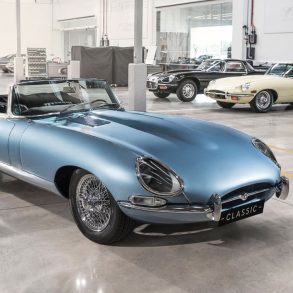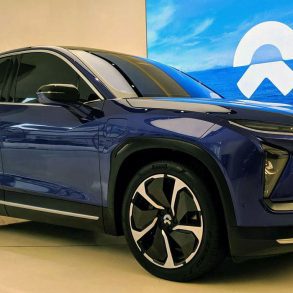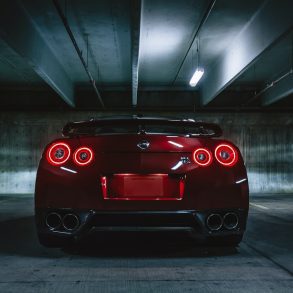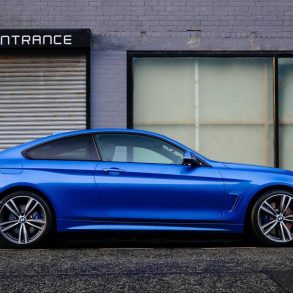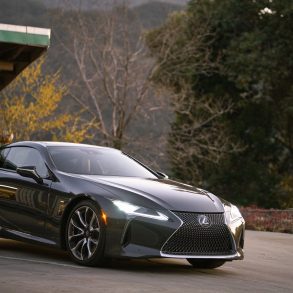We recently wrote about how some Chinese car makers still can’t resist the temptation to simply copy existing car designs, a practice that may work in the short term, but won’t do their brand perception any favors in the long run. To build a brand beyond a certain threshold, and especially if you’re looking to export, you’ll need to develop a style of your own. And although foreign car makers are required to work with a local partner if they want to produce cars in China, they’ll be less likely to co-operate with a partner known for stealing intellectual property rights. Therefore, not all copying is done illegally. Some Chinese auto makers have bought the design license and sometimes even the entire production line from obsolete foreign models after those ended their original life cycle and production abroad. This practice has happened a lot in the past and continues today, not always with entire designs, but also with platforms, the most expensive part in the development of a car. I’ll try to make an as comprehensive list as possible, if you have any more input from platforms I may have forgotten, please let me know!
Seat Toledo I (1991-1999) – > Chery A11, a.k.a. Fengyun or Windcloud (1999-2006), later updated to Chery A15 a.k.a. Cowin, Flagcloud or Amulet (2006-2015)
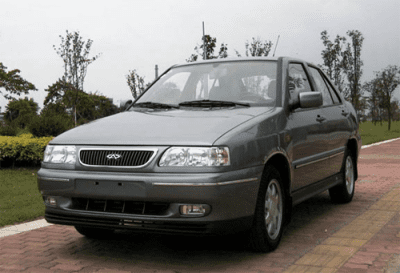
One of the most interesting stories involves Chery, now a 500.000 annual volume car maker, and Spanish brand Seat. Chery was founded in the mid-1990s by the government of Wuhu in the Chinese province of Anhui. At the time, the central Chinese government restricted the issue of licenses to produce cars to new players, but they would allow the production of engines. But the Wuhu government was determined and had acquired the production line of an outdated Ford engine and moved that from the UK to their province. However, they didn’t have any customers to purchase and use those engines, so they decided to contact Yin Tongyao, a former engineer at the FAW-Volkswagen Joint Venture who had worked on
the FAW-Volkswagen Jetta. Tongyao struck a secret deal with Seat, whose first generation Toledo (Seat’s first model developed under VW ownership, built on the VW A2 platform of that same Jetta, the European Jetta II) was near the end of its life cycle.After the last Toledo was produced in Spain in 1998, the production line and tooling was shipped to China, without the knowledge of Volkswagen management. When the folks in Wolfsburg eventually found out about this deal, they weren’t exactly amused: the car Chery was going to build would compete directly with their Jetta. Moreover, the Jetta had been produced with parts from local suppliers, it wasn’t too hard for Chery to get 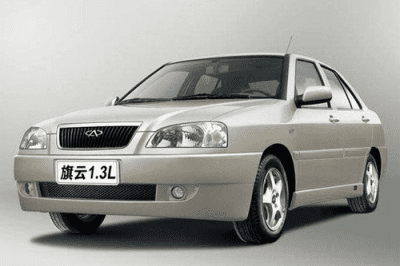 those same parts for their Windcloud, except for the engine. But that had been the plan all along: to produce a car in which Chery could use its own obsolete Ford engines. Volkswagen even tried to sue Chery for using Jetta parts on the Windcloud, as it couldn’t object to the use of the Toledo license which was acquired legally, even though without consent from VW itself. For nearly two years, Chery officially produced just “automotive components”, for which it had a license. They just didn’t tell the central government the components were already in a fully assembled form: the Windcloud. Eventually, Chery received government approval to produce and market their cars nationwide in 2001. The second generation, named Cowin, was produced until 2015 as the Cowin 2.
those same parts for their Windcloud, except for the engine. But that had been the plan all along: to produce a car in which Chery could use its own obsolete Ford engines. Volkswagen even tried to sue Chery for using Jetta parts on the Windcloud, as it couldn’t object to the use of the Toledo license which was acquired legally, even though without consent from VW itself. For nearly two years, Chery officially produced just “automotive components”, for which it had a license. They just didn’t tell the central government the components were already in a fully assembled form: the Windcloud. Eventually, Chery received government approval to produce and market their cars nationwide in 2001. The second generation, named Cowin, was produced until 2015 as the Cowin 2.
Seat Ibiza I (1984-1993) -> Nanjing Yuejin Soyat (2003-2007)
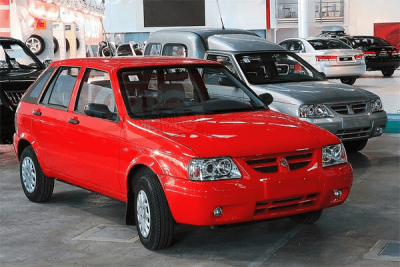 Seat had some experience with selling an obsolete design, from when it sold the license to produce the first generation Ibiza. The design of that model, produced in Spain from 1984 to 1993, was sold in 1997 to a Joint Venture between Nanjing Auto (who later also bought the assets and brands from the bankrupt MG Rover, as you can read below) and Lion Group of Malaysia, a conglomerate with interests in steel production. Production of the Zhongguo Nanjing NJ6400 started in 1999, after Lion Group pulled out of the JV. When the license to the Ibiza expired in October 2003, Nanjing needed to redesign the model and renamed it Nanjing Yuejin Soyat. They also developed an MPV/wagon ironically called Unique, which took an awful lot of inspiration from the Seat Inca, a van based on the second generation Ibiza, for which they didn’t have the rights. Production of the cars ended in 2007 after Nanjing was bought by SAIC Motor (Shanghai Automotive Industry Corp., a Chinese state-owned auto maker).
Seat had some experience with selling an obsolete design, from when it sold the license to produce the first generation Ibiza. The design of that model, produced in Spain from 1984 to 1993, was sold in 1997 to a Joint Venture between Nanjing Auto (who later also bought the assets and brands from the bankrupt MG Rover, as you can read below) and Lion Group of Malaysia, a conglomerate with interests in steel production. Production of the Zhongguo Nanjing NJ6400 started in 1999, after Lion Group pulled out of the JV. When the license to the Ibiza expired in October 2003, Nanjing needed to redesign the model and renamed it Nanjing Yuejin Soyat. They also developed an MPV/wagon ironically called Unique, which took an awful lot of inspiration from the Seat Inca, a van based on the second generation Ibiza, for which they didn’t have the rights. Production of the cars ended in 2007 after Nanjing was bought by SAIC Motor (Shanghai Automotive Industry Corp., a Chinese state-owned auto maker).
MG ZT (2001-2005) -> SAIC MG7 (2007-2013) and MG TF (2000-2005) -> SAIC MG TF (2007-2011)
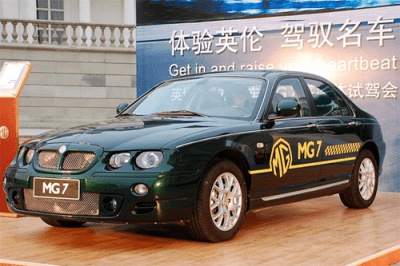 SAIC Motor didn’t mind using a bunch of designs and platform either, and with the acquisition of Nanjing Auto, they also got their hands on the MG brand and the dormant British car brands Austin, Morris, Princess, Sterling, Vanden Plas (outside the US & Canada) and Wolseley, as well as the production line for the MG ZT/Rover 75 and MG TF and the factory in Longbridge, UK which Nanjing had bought after the MG Rover bankruptcy in 2006. SAIC had also bid on those assets but was outbid by Nanjing at that time, and the solution was then to simply buy its rival. The MG ZT was turned into the MG7 which was produced in Nanjing, China from 2007 to 2013. A long wheel-base version called MG7L had a grille similar to the Rover 75 V8. The MG TF kept its name and also started production in Nanjing in 2007, but sold in very limited numbers in China, as most convertibles do. SAIC also assembled the MG TF in the original Longbridge factory from 2008, using CKD (Complete Knock Down) kits manufactured in China. A lack of demand in the UK for the outdated model meant only 906 units were assembled there before production ended in 2011.
SAIC Motor didn’t mind using a bunch of designs and platform either, and with the acquisition of Nanjing Auto, they also got their hands on the MG brand and the dormant British car brands Austin, Morris, Princess, Sterling, Vanden Plas (outside the US & Canada) and Wolseley, as well as the production line for the MG ZT/Rover 75 and MG TF and the factory in Longbridge, UK which Nanjing had bought after the MG Rover bankruptcy in 2006. SAIC had also bid on those assets but was outbid by Nanjing at that time, and the solution was then to simply buy its rival. The MG ZT was turned into the MG7 which was produced in Nanjing, China from 2007 to 2013. A long wheel-base version called MG7L had a grille similar to the Rover 75 V8. The MG TF kept its name and also started production in Nanjing in 2007, but sold in very limited numbers in China, as most convertibles do. SAIC also assembled the MG TF in the original Longbridge factory from 2008, using CKD (Complete Knock Down) kits manufactured in China. A lack of demand in the UK for the outdated model meant only 906 units were assembled there before production ended in 2011.
Despite losing out on MG, SAIC had gotten their hands on the rights to the Rover 75, but not to the Rover name, which resulted in the creation of the Roewe brand (phonetically similar to Rover), and the resurrection of the Rover 75 as the Roewe 750. Production of that model finally ended in 2016 as its competition was getting too modern, even though it still didn’t look outdated. Considering how the Chinese hate throwing away platforms, we might see some of the Rover 75 DNA again someday.
Rover Streetwise (2003-2005) -> SAIC MG3 SW (2008-2011) (1st gen MG3)
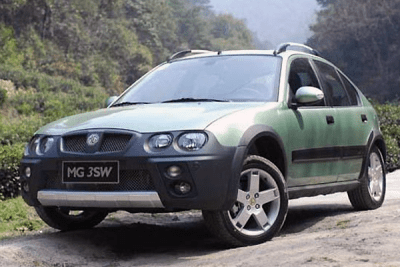 The Rover Streetwise, a jacked-up version of the Rover 25 subcompact hatchback, was also part of the Nanjing estate, and was marketed in China as the MG3 SW from 2008 to 2011. SAIC had the rights to sell the MG3 SW in China only, so no exports have taken place. In 2011 the second generation MG3 was introduced on a new platform and with its own design. That second generation MG3 was also assembled in Longbridge, just as the MG TF and MG6, and has become SAIC MG‘s breakthrough vehicle in the UK with more than 2.600 sales in 2015, making it the most successful Chinese automaker in Europe to date.
The Rover Streetwise, a jacked-up version of the Rover 25 subcompact hatchback, was also part of the Nanjing estate, and was marketed in China as the MG3 SW from 2008 to 2011. SAIC had the rights to sell the MG3 SW in China only, so no exports have taken place. In 2011 the second generation MG3 was introduced on a new platform and with its own design. That second generation MG3 was also assembled in Longbridge, just as the MG TF and MG6, and has become SAIC MG‘s breakthrough vehicle in the UK with more than 2.600 sales in 2015, making it the most successful Chinese automaker in Europe to date.
LDV Maxus (2004-2008) -> SAIC Maxus V80 (2011-present)
After those MG and Rover models, SAIC Motor’s hunger for defunct British cars still wasn’t satisfied, and in 2010 it acquired the intellectual property rights for the LDV Maxus van. But let’s first backtrack a little bit, as the history of this company is littered with bankruptcies.
Leyland DAF was established in 1987 when the British Leyland Trucks division (a part of the Austin Rover Group) merged with DAF Trucks from The Netherlands. Production of their first vans, the 200 and 400 series based on the 1982 Sherpa K2 van, started in 1989 in Leyland, UK. Then in 1993 DAF Trucks went into insolvency, followed by a management buy-out of the Leyland DAF Vans Limited, making it a stand-alone company. LDV Limited started development of a next generation van with Daewoo of South Korea, but that partner also went bankrupt in 2000. After General Motors bought Daewoo in 2001, LDV acquired the exclusive rights to the vehicle in development, purchased the tooling and moved it from Daewoo’s plant in Lublin, Poland where it was intended to be produced to the LDV factory in Birmingham, UK. Production of the new van named Maxus finally started late 2004. However, 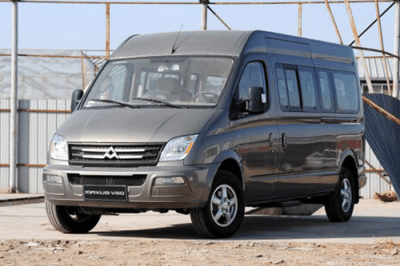 less than a year later LDV ran into financial trouble and went into administration itself. Its assets were bought by Sun Capital Partners in December 2005, who then sold it to the Russian GAZ Group in July 2006. GAZ had plans to start production of the Maxus in Russia, but those plans never came to fruition due to lack of funds at the Russian owner and a worldwide recession. At the end of 2008 production was halted and in June 2009 the LDV factory went into administration again. The Malaysian company Weststar LDV, which distributed the Maxus under license in Asia and the Middle East, intended to acquire LDV with help of subsidies from the UK government, but couldn’t secure enough funding to save the company. In October 2009, the assets of the the former LDV were sold to the Chinese company ECO Concept, who subsequently sold them to SAIC Motor in 2010. SAIC turned Maxus into a brand name for commercial vans in China and started production of the Maxus V80, which is the original LDV Maxus, in 2011. The Chinese made vehicle is also exported to Australia, Ireland and the UK (to complete a full-circle) as the LDV V80 and is also assembled in Malaysia by DRB-Hicom (also owners of the Proton and Lotus brands) and Weststar LDV, and is marketed there under the name Weststar LDV Maxus.
less than a year later LDV ran into financial trouble and went into administration itself. Its assets were bought by Sun Capital Partners in December 2005, who then sold it to the Russian GAZ Group in July 2006. GAZ had plans to start production of the Maxus in Russia, but those plans never came to fruition due to lack of funds at the Russian owner and a worldwide recession. At the end of 2008 production was halted and in June 2009 the LDV factory went into administration again. The Malaysian company Weststar LDV, which distributed the Maxus under license in Asia and the Middle East, intended to acquire LDV with help of subsidies from the UK government, but couldn’t secure enough funding to save the company. In October 2009, the assets of the the former LDV were sold to the Chinese company ECO Concept, who subsequently sold them to SAIC Motor in 2010. SAIC turned Maxus into a brand name for commercial vans in China and started production of the Maxus V80, which is the original LDV Maxus, in 2011. The Chinese made vehicle is also exported to Australia, Ireland and the UK (to complete a full-circle) as the LDV V80 and is also assembled in Malaysia by DRB-Hicom (also owners of the Proton and Lotus brands) and Weststar LDV, and is marketed there under the name Weststar LDV Maxus.
This was part 1, continue with part 2 about the Volkswagen Jetta, Audi 100, Daihatsu Move and Austin Maestro/Montego, part 3 about the Suzuki Alto, Daihatsu Terios, Fiat Palio/Siena, Fiat Multipla and Lancia Lybra and part 4 about the Jeep Cherokee, Nissan X-Trail, Hyundai Santa Fe, Mitsubishi Pajero and Pajero Pinin, and the Saab 9-3.



